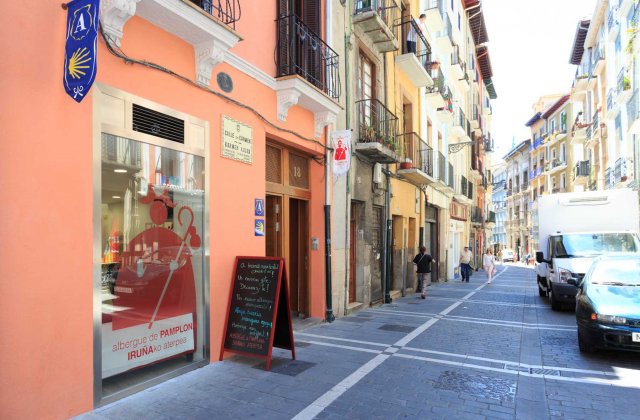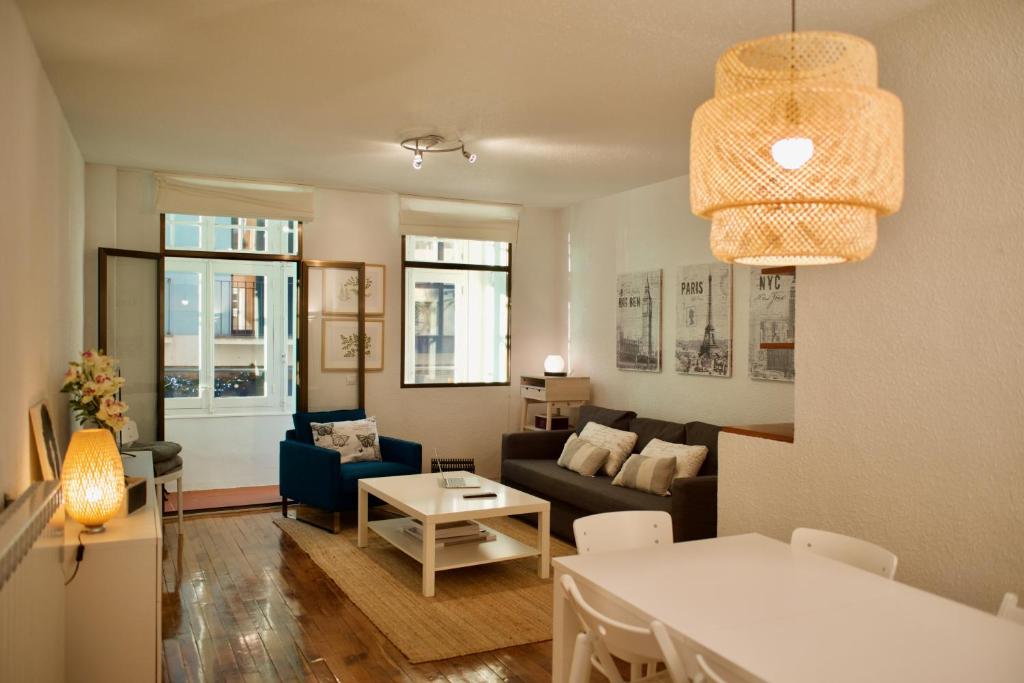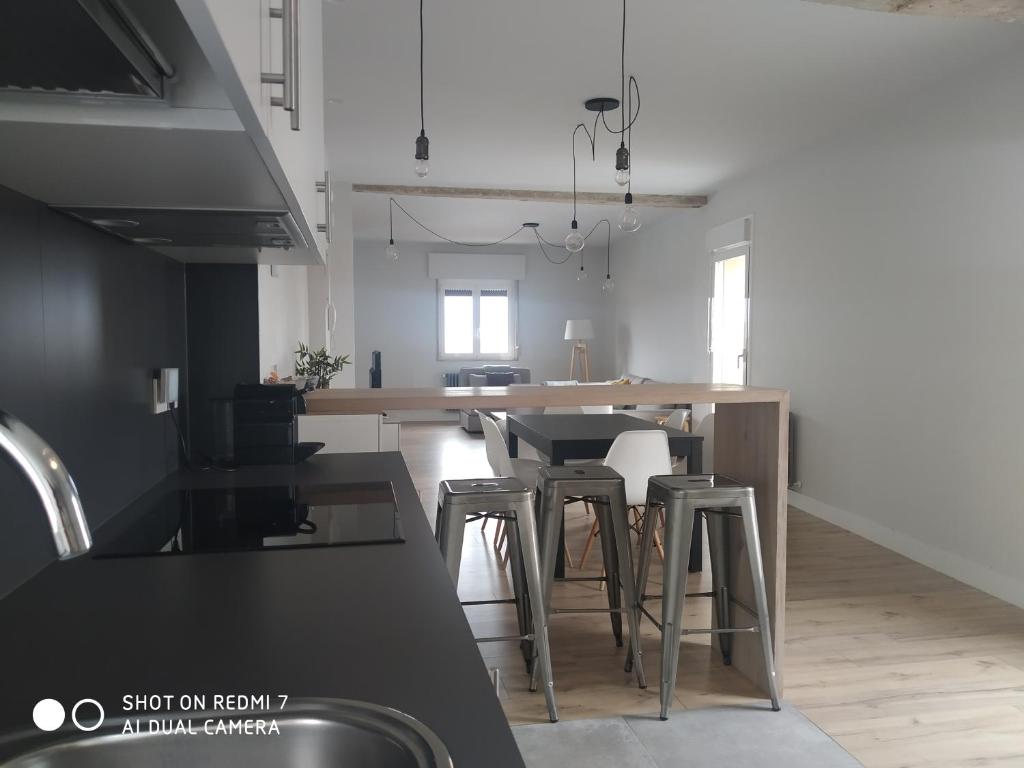Modern Pamplona is the most populous city along the Camino Francés. It offers just about every service you might need along the way. Its main square, the Plaza del Castillo was renovated in 2003 and is the easiest point from which to get your bearings.
Hemingway helped put the city back on the map and into the minds of many. He visited frequently and wrote kindly of the place. Some of his old haunts are still around (Bar Txoko, Hotel La Perla, and Café Iruña).
As is usual in every Spanish town with a large tourist population, the best food is found off the beaten path. Luckily, that is a quick stroll down Calle San Nicolás on the west side of the Plaza.
Pamplona is worthy of a rest day to see the sights, or perhaps a half day. Near the entrance to town is the Neoclassical Cathedral de Santa María el Real, your credential gets you a discount on the Cathedral and the attached Museo Diocesano. Another church of note is the fortified Iglesia of San Saturnino.
Hinweis: Pamplona is the first city along the way with a post office (Correos ⨠), perfect for lightening your pack. The post office here can help you send your stuff to the Santiago post office, or to Casa Ivar (the same Ivar as the popular ‘Camino Forums’’). He offers package and luggage receiving & storage in Santiago. Prices range from 15-25€, depending on the size of the package. When you arrive in Santiago, stop by Ivar´s office and pick it up. Opening hours are listed on casaivar.com, or you can email Ivar at ivar@casaivar.com.
Fiesta: Pamplona enjoys its fiestas. The most notorious of them is San Fermín (think of men running from bulls) from July 6th - 14th. The municipal albergue is closed during that time, and accommodation elsewhere is hard to find and an order of magnitude more expensive. If you are keen on the experience plan well in advance, otherwise just pass through town with a watchful eye on your belongings.
There is a saying that the people of Pamplona cannot go a full year with celebrating San Fermín, so to help they also celebrate San Fermín Txikito (or Chiquito, or San Fermín de Aldapa) on the weekend closest to the 25th of September when the church celebrates the martyrdom of San Fermín. No bull.
Geschichte: Pamplona has been a city of importance since the year 75 BC. It was then that the Roman general Pompaelo set up camp at what has always been a geographically strategic point. That the camino passes through Pamplona is no coincidence, the geography dictates that it ought to.
As such, some would say that Pamplona’s history was written by the hills which have forever funneled Pyrenean traffic through this point. Indeed, it has a long and complicated history of conquest and reconquest, and for the 5 centuries that followed its capture by the Muslims in 718 little changed. They were eventually expelled from the city (but not the region) by the Basques and for the subsequent 200 years the power struggles that ensued were primarily motivated by the desire to keep them from regaining control.
By the 12th century things had calmed down enough for the city to begin growing in earnest, and again its geographic position made for a unique situation. It was by all measures a melting pot of cultures, with Basques from both sides of the French border, Castillians, Jews, and the remaining Muslim population each carving out a barrio for themselves. Cooperation was scarce, and the city survived a cycle of growth and destruction as each group struggled to defend themselves while attacking the others. The situation was so intense that Pamplona has the distinction of being one of the few cities with defensive walls within the city, rather than around it.
Der Weg: The camino leaves town via the star-shaped Citadel that rose up during the 17th century (much like the citadel in Saint Jean Pied de Port, as both were based off the designs of the same French military engineer). If you are lost, find your way to the park which surrounds the citadel. The camino is well marked from there.















































